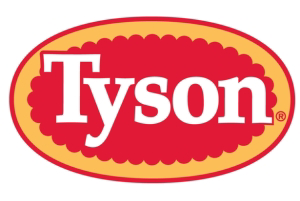Tyson Foods boosts profits in tough second quarter

US meat producer, Tyson Foods more than doubled it’s profit in the second quarter due to increased chicken sales and higher prices for beef and pork.
Sales volumes grew due to stronger demand for chicken products and mix of rendered product sales. The slight decrease in average sales price was primarily due to lower feed ingredient costs, which decreased $175 million and $340 million for the second quarter and six months of fiscal 2014, respectively.
“We had a record second quarter, which is a testament to our great team and our balanced multi-protein, multi-channel, multi-national business model,” said Donnie Smith, Tyson Foods’ president and chief executive officer. “Our second quarter is usually our most challenging. We had a lot to overcome, including a harsher than normal winter, but I’m satisfied with the results. I’m still confident in my expectations for the year that we will achieve our goal of 6-8% sales growth in value-added products while generating at least $2.78 earnings per share.
“We’re pleased with the performance of our Chicken segment as sales volume grew on strong demand. Our Beef and Pork segments did a great job of managing tight supplies and maintaining margins through record high input costs. In our Prepared Foods segment in the second quarter, we integrated recent acquisitions, invested in marketing and advertising and had several new successful product launches. While these efforts take time to bear fruit, we believe Prepared Foods presents one of the best opportunities for earnings growth in the future.
“The International segment is another area where we think some short-term sacrifices are worth the long-term earnings potential. We’ve chosen to slow down our growth this year, primarily due to weak demand in China. We are committed to our China operations, and we believe we now have the right pace for developing that business as we wait for demand to return. We think it will get sequentially better from here, and we like the long-term opportunity,” Smith concluded.
The company expects domestic chicken production to increase around 2-3% in fiscal 2014 compared to fiscal 2013, and reduced feed costs of approximately $500 million.













